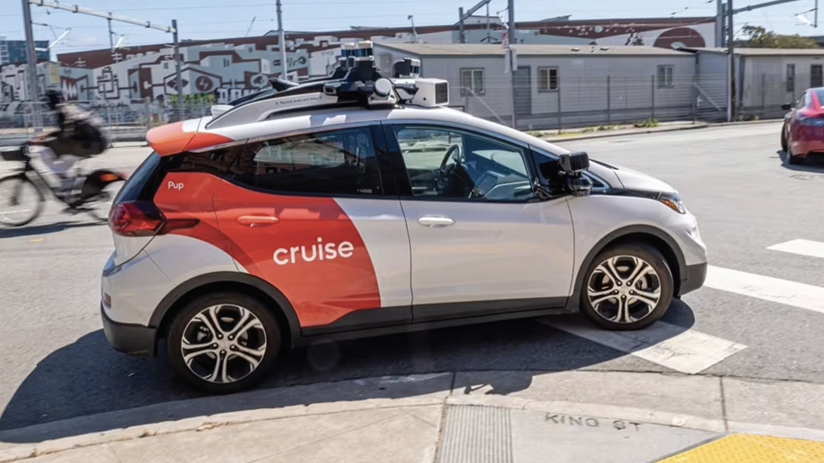Life in the Fast Lane – The Rise and Fall of General Motors’ Cruise Robotaxis
In 2016, General Motors (GM) spent more than $1 billion to acquire Cruise Automation, a start-up company focused on automated vehicle (AV) technology. This was GM’s attempt to enter the emerging AV robotaxi market and compete with major tech companies like Google and Amazon. Both Silicon Valley and Detroit saw an opportunity to generate huge profits through the destruction of thousands of blue-collar transportation jobs, fantastically claiming the company would generate $50 billion of annual revenue from one million robotaxis by 2030.
Hit and Drag
Cruise’s rapid expansion came to a screeching halt within seven years when, in 2023, a car struck a pedestrian in San Francisco, throwing the person into the path of a Cruise robotaxi. The robotaxi ran over the pedestrian, paused, and then dragged the person 20 feet down the street before coming to a complete stop. The pedestrian suffered severe injuries but luckily survived.

Cruise defended its robotaxi’s performance, attempting to lay the blame entirely on the driver of the other car. However, a third-party review of the incident found that the pedestrian’s feet and legs were visible in the robotaxi’s left-side camera from the time it struck the pedestrian until the vehicle came to its final stop. The computer simply did not recognize that a human being was trapped under the vehicle.
Cruise’s bungled response to the accident resulted in a $500,000 criminal fine from the Department of Justice, a $1.5 million penalty from the National Highway Traffic Safety Administration, and an approximately $10 million legal settlement with the injured pedestrian. Additionally, Cruise lost its California operating permit, suspended operations of its entire U.S. fleet, pushed out its CEO, and laid off a quarter of its staff. Despite some attempts to restart testing, GM said in December 2024 that it would wind down Cruise’s robotaxi program after burning through more than $10 billion.
Important Lessons
While cash-strapped transit agencies across North America might be susceptible to the AV industry’s marketing, Cruise’s story offers some important lessons. First and foremost, AV companies have thrust the public into a real-time experiment with unproven and unsafe technology in a scramble for investment capital, publicity, market share, and government contracts. Second, it is increasingly clear that automated vehicle operations are prohibitively expensive and rely in part on smoke and mirrors. Cruise’s automated Chevrolet Bolt robotaxis cost up to $200,000 and requires 1.5 support personnel per vehicle. According to news reports, remote vehicle monitors assisted the robotaxis every three to five miles traveled.
The ATU will continue to fight both for the safety of our members and passengers and for responsible investments in public transit. Transit leaders and lawmakers at all levels of government must use public money to support proven and safe modes of transit. Without billions of dollars of cash to spend, AV deployments simply do not make fiscal sense. Moreover, self-serving safety claims made by AV companies should be treated with skepticism when we already know that public transportation is 10 times safer than traveling by car. Rather than indulging in fanciful AV projects, our employers should be investing in commonsense job quality and safety improvements to overcome the operator shortage and guarantee reliable transit service.